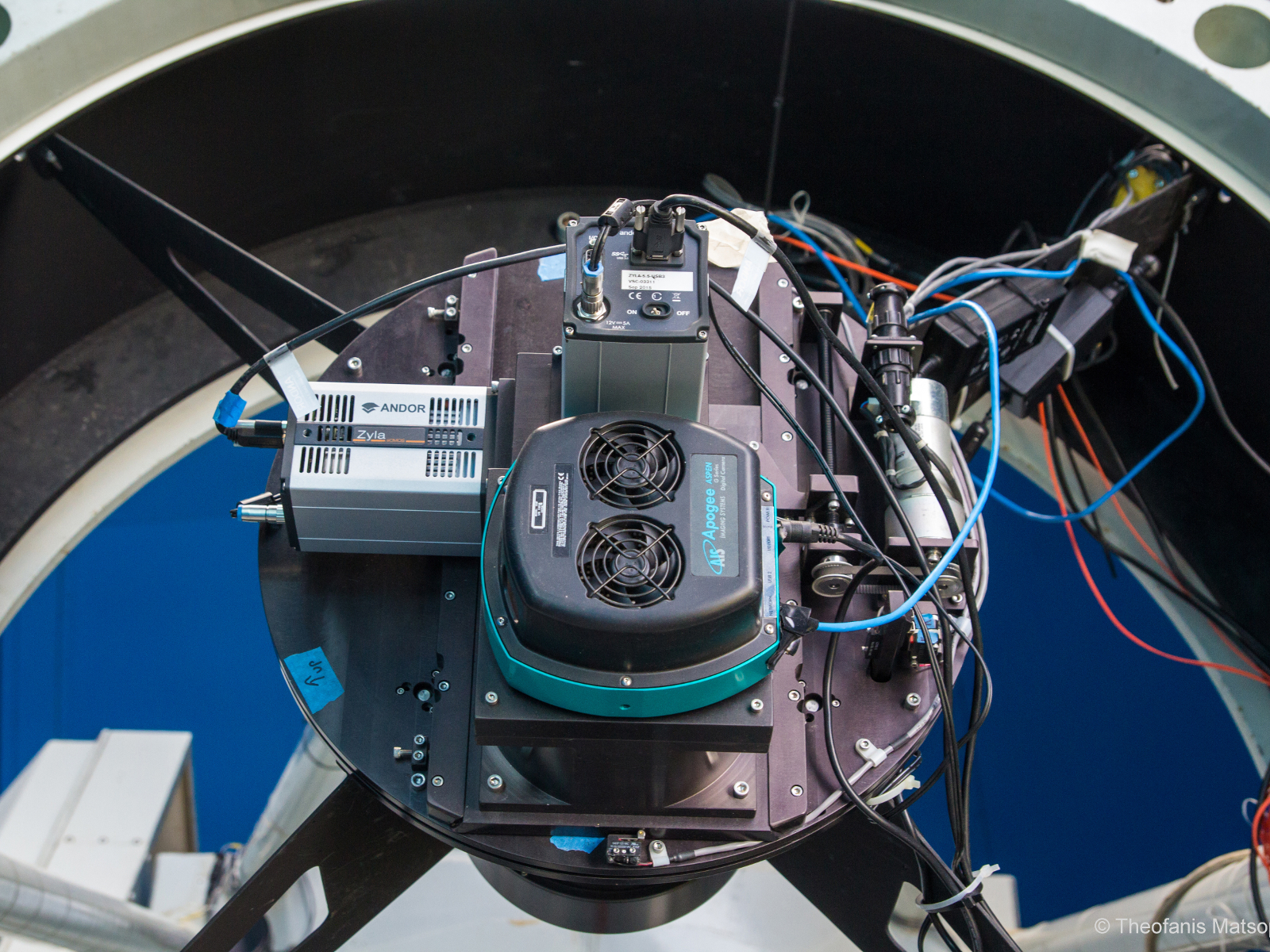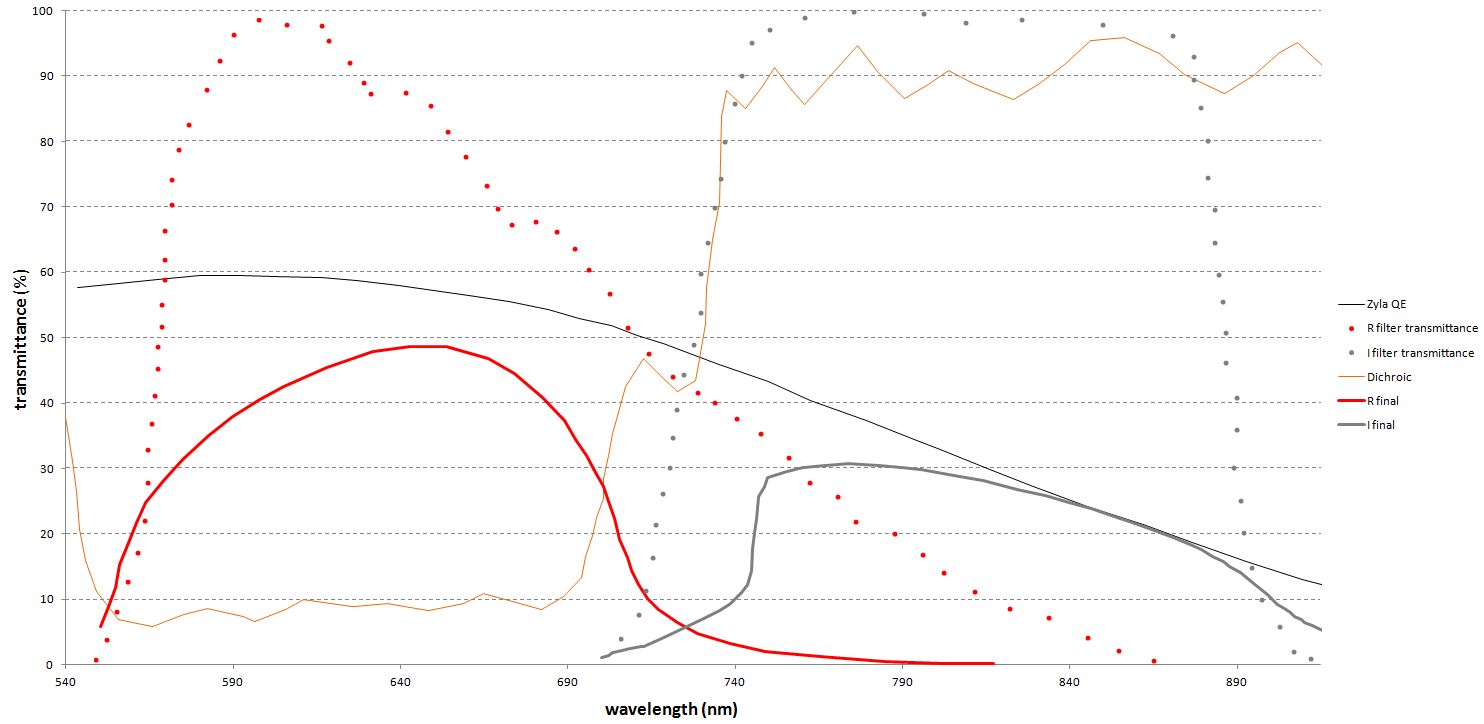Features & Optics
The 1.2m Cassegrain telescope of the Astronomical Station Kryoneri, made by Grubb Parsons Co., was installed in 1975. Its original optical system consisted of a parabolic primary mirror of 1.2m diameter and f/3 focal ratio, and a hyperbolic secondary mirror (31 cm). The mirrors were made of Zerodur material (a type of glass with zero expansion). Its mounting is based on a modified torque-tube equatorial system. During its first 40 years of operation the telescope’s effective focal ratio was f/13, with a field of view about 40’ and an image scale of 12.5″/mm.
In May 2016, the telescope was upgraded by DFM Engineering Inc. for the needs of the NELIOTA project. This upgrade included the conversion of the original optical configuration to a prime focus telescope, the replacement of some mechanical parts of the telescope, the installation of a new control system, dome automation, and the installation of a Prime Focus Instrument (PFI) able to provide a large field-of-view as required for NELIOTA. The new optical configuration yields a focal ratio of f/2.8 (Xilouris et al. 2018).
Fast-Frame Imager
The Fast-frame imager consists of two sCMOS Andor Zyla 5.5 cameras, installed at the prime focus of the telescope, offering the ability to record a target simultaneously in two different wavelength bands. A dichroic with a cut-off at 730 nm splits the light beam, sending each split beam to a different camera. The cameras are equipped with R and I-band Johnson-Cousins filters.

| Parameter | Value |
|---|---|
| Model | Andor Zyla 5.5 |
| Type of sensor | Front Illuminated Scientific CMOS |
| Shutter options | i) Global ii) Rolling |
| Gain settings options | i) High well capacity (12bit) ii) Low noise (12 bit) iii) Low noise & High well capacity (16 bit) |
| Read out rate options | i) 560 MHz ii) 200 MHz |
| Sensor size (mm) | 16.6×14.0 |
| Pixel size (μm) | 6.48 |
| Total pixels | 2560×2160 |
| Field of view (arcmin) | 17.0 x 14.4 (R-band) 16.8 x 14.2 (I-band) |
| Pixel scale (arcsec/pixel) | 0.4 |
| Maximum frame rate | 40 fps |
| Maximum exposure time | 30 sec |
| Linearity | < 60,000 ADUs (16-bit); <4,000 ADUs (12-bit) |
| Cooling | Thermoelectrical (constant at 0 degrees) |
| Connection | USB 3.0 |
| Rolling Shutter | Global Shutter | ||||
| System RO rate | Gain settings | CMOS Sensitivity (e- per A/D count) |
Median Read| Noise (e- RMS) |
CMOS Sensitivity (e- per A/D count) |
Median Read Noise (e- RMS) |
| 560 MHz | High well capacity (12bit) | 7.53 | 6.62 | 7.59 | 7.06 |
| Low noise (12 bit) | 0.30 | 1.39 | 0.42 | 2.58 | |
| Low noise & High well capacity (16 bit) | 0.47 | 1.41 | 0.47 | 2.62 | |
| 200 MHz | High well capacity (12bit) | 7.40 | 6.93 | 7.73 | 6.59 |
| Low noise (12 bit) | 0.30 | 1.19 | 0.42 | 2.45 | |
| Low noise & High well capacity (16 bit) | 0.45 | 1.15 | 0.46 | 2.51 | |

The performance of the Prime Focus Instrument (PFI) optical system (dichroic, filters, cameras) is calculated taking into account the Quantum Efficiency (QE; blue solid line) of the cameras, the transmittance of the R and I filters (red and green solid lines, respectively) and the dichroic (black dashed and dot dashed lines). The dichroic is centered at 730 nm with a > 90% throughput. The figure is from Xilouris et al. (2018).
